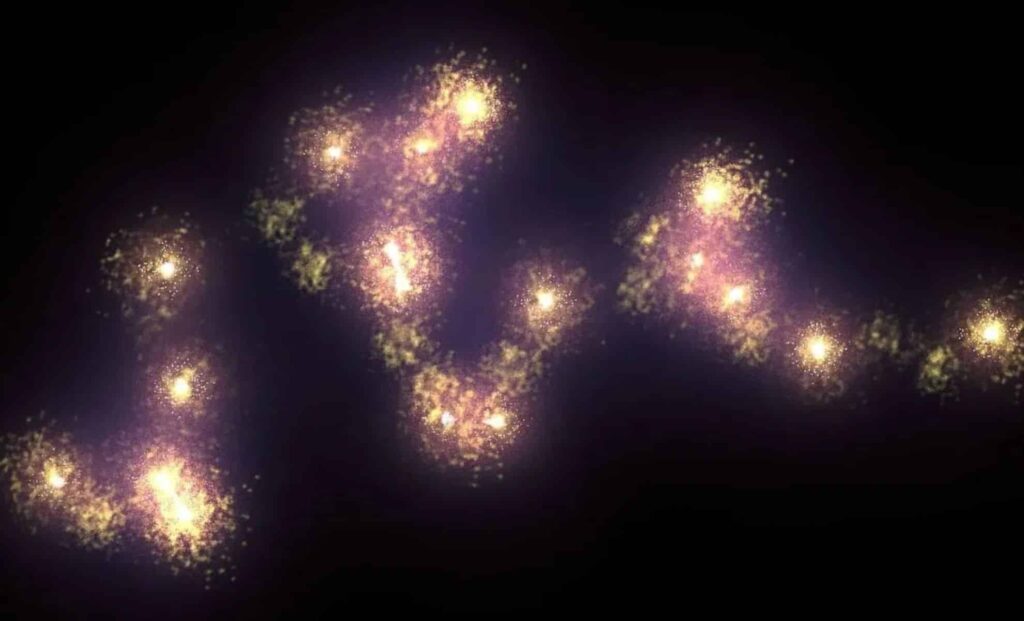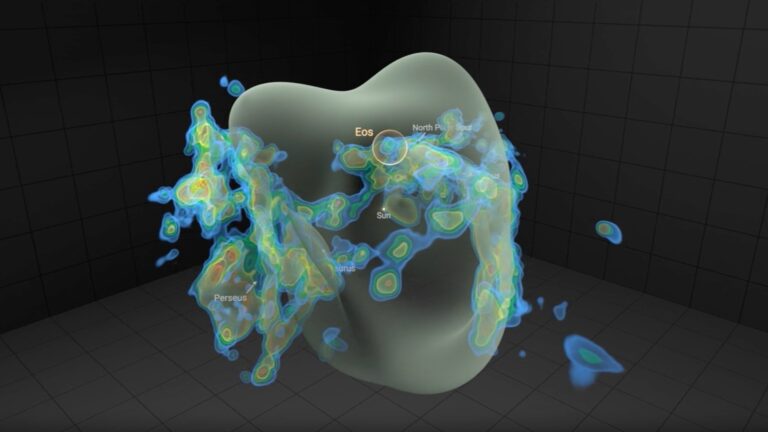
Astronomers Discover the Universe’s Largest Structure is Bigger Than We Thought – The Daily Galaxy
2025-04-22T15:30:00Z
A new study has uncovered that the universe’s largest known structure might be even more massive than previously believed.
Astronomers have just revealed that the largest known structure in the universe, the Hercules–Corona Borealis Great Wall, might be even larger than we initially thought. The latest findings, published in a preprint study hosted on arXiv, suggest that this massive cosmic wall could stretch over 10 billion light-years, exceeding its previous estimate of 9.8 billion light-years. Using gamma-ray bursts—incredibly luminous bursts of high-energy light from distant stellar explosions—scientists have mapped out this giant structure, offering a fresh perspective on how the universe is organized.
The Cosmic Wall That Defies the Cosmos
This “Great Wall” isn’t just a patch of sky filled with random cosmic debris. It is a vast filament of galaxy groups and clusters, a dense region of the universe that stretches across an unfathomable amount of space. Discovered in 2014, it was originally estimated to span about 9.8 billion light-years. However, the latest research suggests that the structure could extend even farther, raising fresh questions about how the universe is put together.
By using a dataset of 542 gamma-ray bursts from a range of distances (known as redshifts), scientists led by István Horváth of the University of Public Service in Budapest were able to map the area in detail. Gamma-ray bursts, which are some of the most luminous explosions in the universe, make excellent cosmic markers because they are visible across vast distances. The bursts clustered together in the same region of the sky suggested that this massive structure was even larger than previously predicted.
A Wall That’s Bigger Than Expected
The new size estimate for the Hercules-Corona Borealis Great Wall challenges the limits of cosmological models. According to the commonly accepted principles of cosmology, the universe should be homogeneous on large scales, with no structures larger than 370 megaparsecs (roughly 1.2 billion light-years). Yet this newly discovered superstructure breaks that limit by a huge margin.
Scientists have ruled out the possibility of statistical errors or telescope glitches. The Great Wall is real, and it’s stretching across an immense chunk of the universe—spanning not just light-years but billions of them. It makes even other giant structures like the Sloan Great Wall and the Giant Quasar Group look like tiny specks in comparison.
A New Understanding of the Cosmos
The implications of this discovery are profound. If this structure truly exists on such a massive scale, then our understanding of the universe and its evolution might need a major overhaul. The cosmological principle, which suggests that the universe is roughly the same in all directions on large scales, is now being seriously challenged by the Hercules-Corona Borealis Great Wall.
In addition to being a puzzle for cosmologists, this structure is more than just a point of curiosity; it could be a key to understanding the formation of galaxies, dark matter, and the forces that shaped the universe. Because gamma-ray bursts are linked to the deaths of massive stars, they also serve as markers of star formation, giving astronomers a unique tool to study parts of the universe that traditional galaxy surveys can’t reach.
Auto-posted from news source






